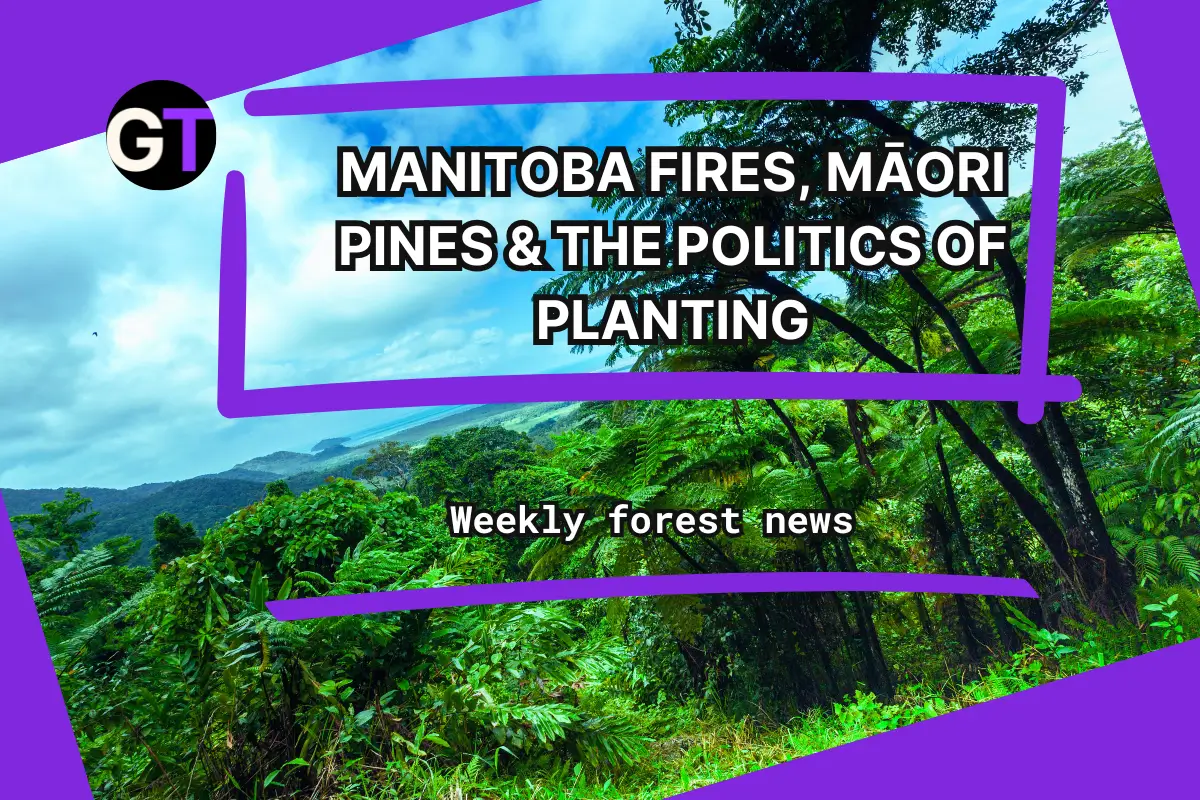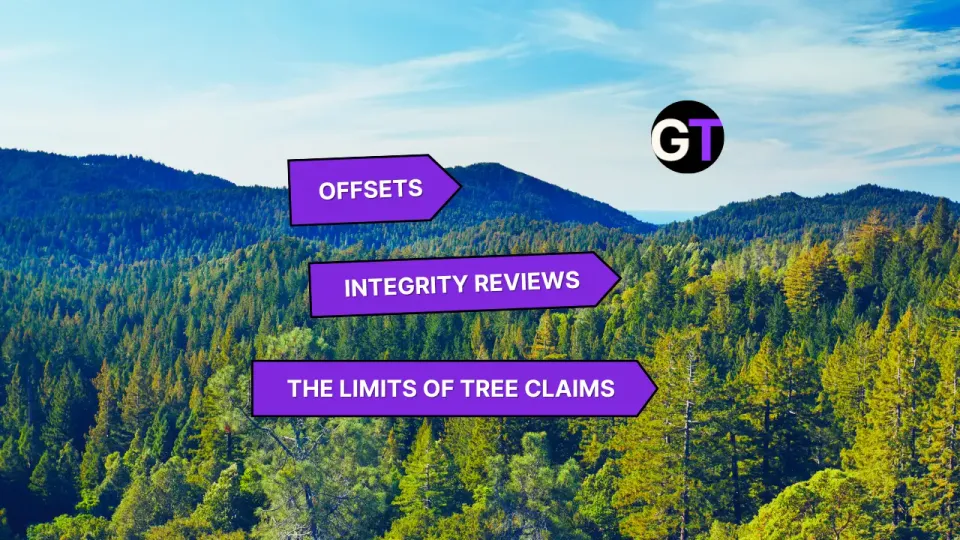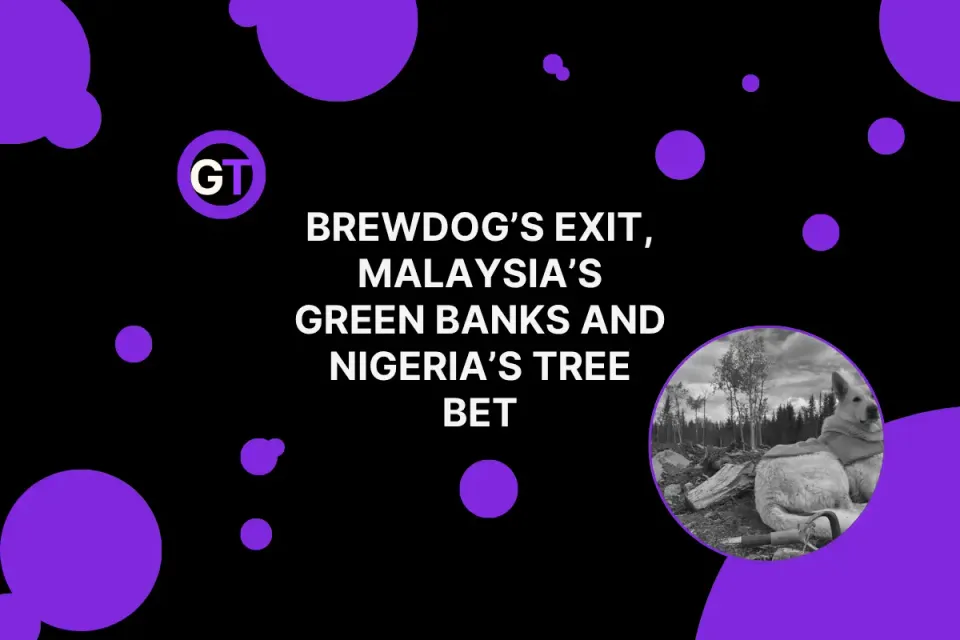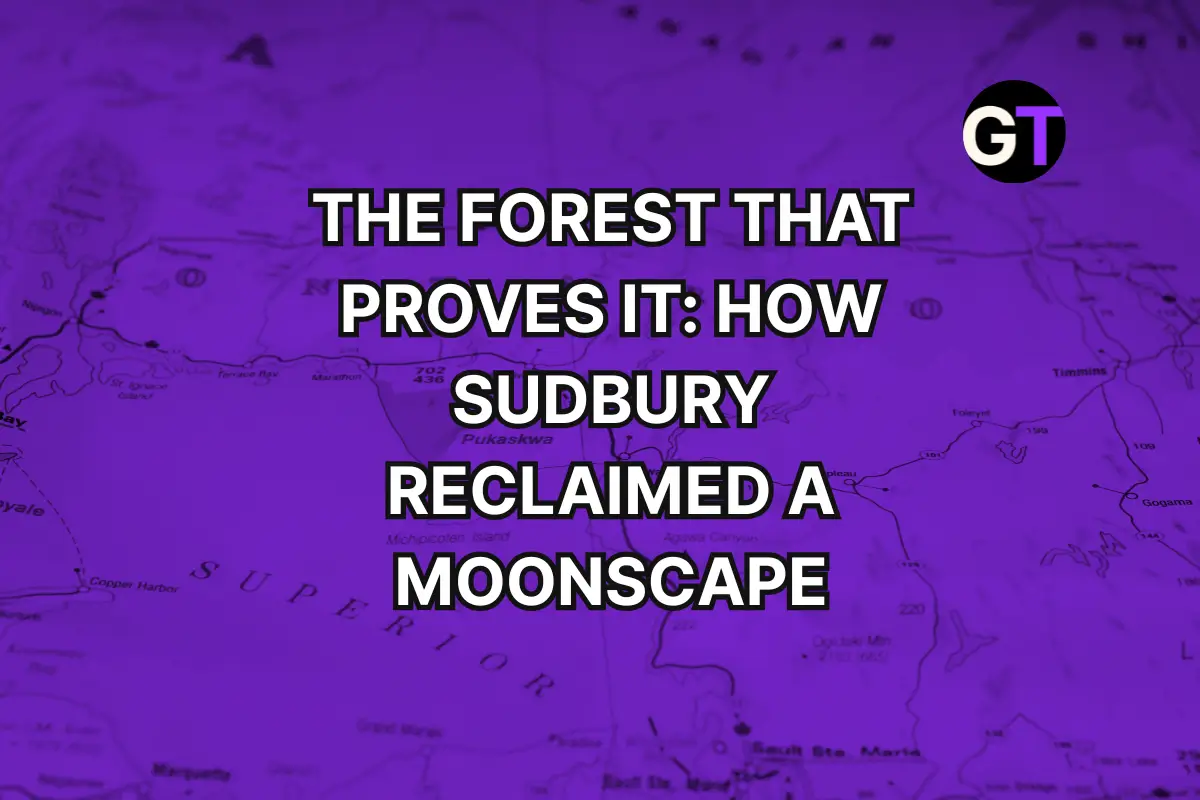Manitoba Fires, Māori Pines & the Politics of Planting
This week in forest news: pine transitions, fire debates, canopy tech, and why community control makes all the difference.

Restoration Works Best When People Call the Shots: Study
Turns out, planting trees isn’t just about digging holes and hoping for rain—it’s about politics, power, and who gets to make the rules. A new study spanning four decades of government-sponsored planting in North India shows that forests thrive when local communities have real, lasting control over planning and management. Where people were looped in from the start and kept decision-making power over time, canopy cover rose by nearly 10 percentage points and households saw a 62% jump in livelihood benefits. In contrast, “one-and-done” participation at planting time delivered basically squat. The takeaway? If you want forests that grow tall and communities that thrive, you need more than short-term targets—you need long-term, people-centered governance that treats locals as co-architects, not just labor.
💬 Can global tree-planting pledges pivot from box-checking participation to actual people-powered restoration?
👉👉 Read more via Environmental Research Letters
From Pines to Podocarps: New Zealand’s Big Forest Transition Experiment
New Zealand is betting big on a forest identity crisis: turning vast pine plantations into lush native ecosystems. Tāne’s Tree Trust is running a five-year, MPI-backed experiment to see if understory natives can muscle their way beneath pine canopies, aided by fencing, canopy poisoning, and long-haul monitoring plots. The goal? Publicly released guidelines in 2025 that could rewrite carbon farming, biodiversity planning, and landowner playbooks. If it works, yesterday’s monocultures become tomorrow’s native sanctuaries—if not, we’re just babysitting pines in perpetuity.
💬 Can pine plantations really grow into native forests—or are we just dressing exotics in local costumes?
👉👉 Read the reports via Tāne’s Tree Trust
Forestry’s Image Problem: Woodlands Loved, Timber Overlooked
Brits love their woodlands — for wildlife, carbon storage, and climate resilience. But timber production? Still a hard sell. A new Forest Research survey found strong public backing for tree planting and conservation, yet only 24% in Scotland and 15% in Wales cited timber as a benefit of forestry. That gap highlights a stubborn disconnect: people want forests, but often fail to connect them to the wood products they use every day. For a sector pushing both climate goals and rural economies, bridging this perception divide may be just as critical as planting the next tree.
💬 Can the forestry sector reframe timber not as a threat to beloved woodlands, but as part of the solution?
👉👉 Read the full article in Forestry Journal
Building from the Ground Up: Scaling Locally-Led Monitoring of Conservation’s Social Impacts
A new Forest Peoples Programme report spotlights a major blind spot in global conservation: while ecological outcomes are closely tracked, social impacts on rights, livelihoods, and governance are often overlooked. Yet Indigenous Peoples and local communities are already filling that gap, running 80+ monitoring initiatives across 46 countries that capture exactly these dimensions. The strongest efforts don’t just measure biodiversity — they track equity, cultural values, and community well-being, generating data robust enough to complement official frameworks. The challenge? Funding insecurity, political resistance, and a lack of recognition from global systems like the GBF. The opportunity? Elevating community-led monitoring from “alternative data” to a cornerstone of global accountability.
💬 Can community-led social impact data be taken seriously in global conservation — and what would it mean for strengthening MRV frameworks?
👉👉 Read the full report in Forest Peoples Programme
China’s Great Green Wall: From Sand to Stand of Trees
China is doubling down on its decades-long war against desertification, rolling out new reforestation and land restoration projects from Xinjiang to Shanxi. At the heart of the push is the Three-North Shelterbelt Project—a.k.a. the “Great Green Wall”—a 3,000-kilometre mega-hedge against the Taklamakan Desert. Think straw grids, poplar trees, and irrigation wizardry, all adding up to a transformation so massive that China’s forest cover has leapt from 10% in 1949 to over 25% today. Xinjiang alone went from 1% to 5% forested land in four decades. It’s a rare good news headline: deserts shrinking, forests growing, and people figuring out how to live with sand instead of being buried by it.
💬 Can China’s “green wall” keep desertification at bay—or will shifting sands keep testing its foundations?
👉👉 Read more via TV BRICS
Experts say Manitoba needs better forest management to mitigate wildfires — but some divided on best practices
After a brutal fire season that claimed lives, homes, and over 7% of Manitoba’s forests, experts agree on one thing: wildfire suppression alone won’t cut it. But consensus splinters on what comes next. Some push for large-scale prescribed burns, thinning, and shifting conifer-heavy forests to more fire-resilient hardwoods. Others argue for tougher travel bans, stronger public education, and mandatory FireSmart homes. The province, still deep in suppression mode, has deferred big decisions until fall. In the meantime, communities remain caught between two visions: reshaping the land itself or reshaping how people live on it.
💬 Can Manitoba forge a wildfire strategy that balances ecological fire with human safety—or will delay and division leave communities exposed?
👉👉 Read more via CBC News
AI in Africa, Trees in Minnesota, and Finance at COP30
From Minnesota to Mozambique, the money behind reforestation is shifting — AI, credibility, and community are steering the next wave of nature finance. Satellites trained on open-source AI models claim to track trees from space with 97% cheaper verification, potentially transforming restoration into investable assets. Meanwhile, pensions are playing it safe with timberland and farmland, Xilva is raising the bar on what makes NbS projects fundable, Southeast Asia is exploring biodiversity credit blueprints, and Brazil is setting the stage for COP30 with jurisdictional-scale forest finance. The throughline? Markets only scale when trust, data, and local benefits line up.
💬 Can AI and new finance models finally bridge the credibility gap — turning restoration from lofty pledges into mainstream investment?
👉👉 Read the full weekly roundup in Ground Truth
Climbing for Clarity: Mapping the Giants of the Forest
A new study puts canopy terrestrial laser scanning (CLS) on the map — literally. By combining CLS with traditional ground-based TLS, researchers captured the massive crowns of old-growth trees with unprecedented detail, producing point clouds 20% more accurate in branch length and volume. The payoff is big: sharper biomass estimates, richer biodiversity assessments, and even the ability to map canopy bromeliads. The catch? CLS is still resource-heavy, requiring pro climbers and costly kit. But as tech evolves — think drones and lightweight scanners — this method could transform how we measure carbon, model ecosystems, and engage the public with the hidden worlds in the treetops.
💬 Can scaling CLS move us closer to routinely capturing the true ecological value of the planet’s biggest trees — and what innovations will bring it within reach?
👉👉 Read the full study in Remote Sensing in Ecology and Conservation
Strengthening Forest Monitoring in Laos: Transparency, Accountability, and REDD+
In Laos, where 80% of people rely on forests for daily needs, a National Forest Monitoring System (NFMS) is now central to tracking deforestation, carbon stocks, and drivers of forest loss. Since 2008, it has anchored the country’s REDD+ commitments, enabling credible reporting to the UNFCCC and unlocking results-based payments from climate funds. Despite challenges like capturing shifting cultivation and fire impacts, the system is boosting transparency, national ownership, and investor confidence — positioning Laos as a model for forest-rich nations.
💬 Can NFMS frameworks bridge the gap between global reporting standards and the practical needs of communities and governments on the ground?
👉👉 Read the full case study from the FAO

Edited by Chris Harris

This work is licensed under a
Creative Commons Attribution 4.0 International License.





